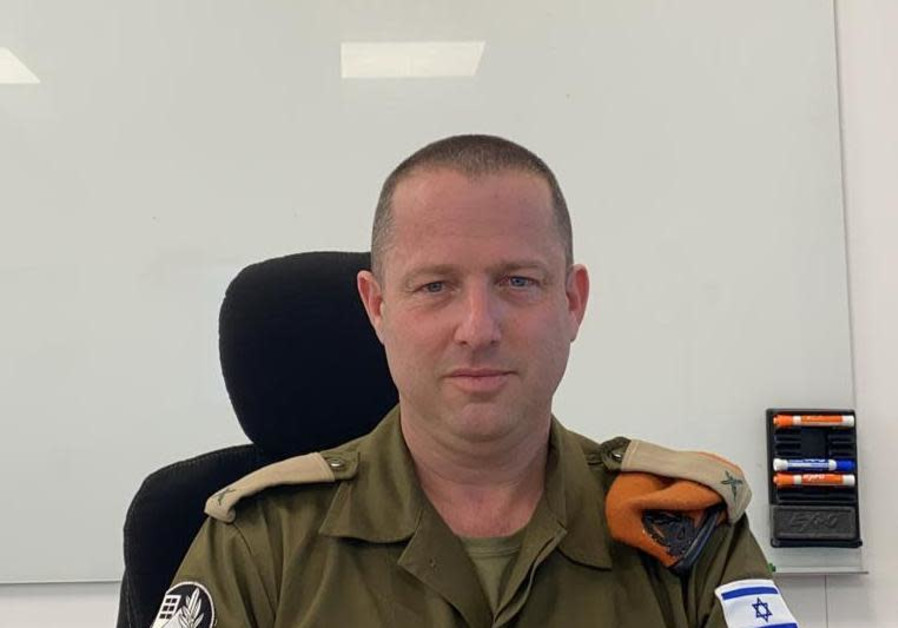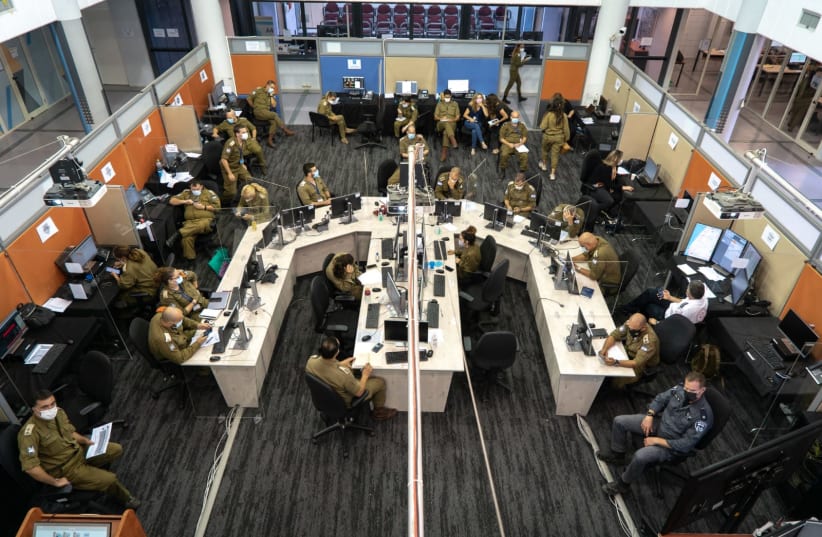Except for the sound of hummingbirds, the silence at the Alon Command Center in Ramle this week was starkly different from two months ago, when this main IDF headquarters in the war against corona had soldiers running around and shouting, maintaining full effort in that battle.
Which made sense: the morbidity rate in Israel back then was skyrocketing. But all that manpower isn’t needed anymore, with only a few hundred new cases a day now.
“We didn’t imagine that the vaccination operation would be so successful,” Alon Command Center Head Brig.-Col. Reli Margalit told The Jerusalem Post. “But even if we were wrong with our estimation, the outcome is obviously a good thing. However, we are not finished with corona yet. As long as it’s here – and we’re tasked by the state to operate – we operate.”

The Alon Command Center was established in August as part of the Home Front Command, aiding the Health Ministry in its battle against corona from day one.
It became fully active in November., it started
While Israel marks a year since it saw its first cases and looks ahead to the light at the end of the tunnel, the Alon Command Center looks back at the advanced, enhanced mechanism it created for the battle, and sees how it can adapt to the current situation and to the future.
The center is based on four main divisions: the investigations and contact chain-breaking division, which is the base of the entire center, in charge of reaching out to all contacts of those who became infected; the tests division, in charge of the entire tests apparatus, including those in cities and towns; the isolation division, in charge of the hotels that are used for quarantining, and for getting people from the airport to these hotels; and the laboratories division, in which the tests are decrypted and sent to the health funds.
Besides these divisions, which served as the day-to-day basis of the center’s activities and its connection to the general public, it also created special mission teams that dealt with specific issues. These teams made up of soldiers and officers, reservists and draftees from the entire army used their field of specialty knowledge to create the mechanism to fight the virus.
The first team established was the outbreaks group, led by an Air Force pilot that included intelligence officers and soldiers from different army branches. It is in charge of locating and mapping mass outbreaks in order to quickly break the infection chain.
“We also established special teams that dealt with passageways such as airports, seaports and land borders, so we could monitor possible entrances of the virus from abroad, and contain it,” Margalit explained. “Another team that we have now is the education and community teams, which monitor outbreaks in the education system. That children have not received the vaccines yet makes this group highly important, and we keep an eye on it. We are trying to keep our head above the water until children will start getting the vaccine.”
Another of the teams that helps to prevent future outbreaks is the variant team. Their job, Margalit said, is to locate and map potential sources of spreading variants, while at the same time assist Health Ministry scientists in sequencing these variants.
MARGALIT WAS the Home Front Command’s Haifa District OC when the command center was established, and was chosen to head the investigations division. He was recently promoted to head the entire center.
Margalit sums up this past year in military terms: “We were an exercising force while learning,” he said, meaning that the entire operation was based on constant updating while already operating.
A main point Margalit focused on as investigations department head, and now as the center’s head, is breaking the infection chain by getting to all contacts as quickly as possible.
“We see that a large percentage of those that we – the center – caught as contacts of someone who was infected turned out to be positive for the virus,” he said. “Some 11% of these tests are positive, which is a higher rate of those who get tested in the health funds. Taking this, and according to our estimations that were certified by senior professional officials, we have saved some 25%-30% of Israel’s morbidity rate by cutting infection chains. That essentially means that 25%-30% of possible deaths were saved. I think that this is a major achievement of the infection chain-breaking operation.”
Now that the trend of infections are in decline e en while the future is unknown, Margalit said that they are operating on standby, and focusing on improving their abilities.
“We set a standard for dealing with a patient – from the moment he’s known as a patient, through the investigation, the contact tracing, the tests to his arrival to a corona hotel – to be less than 24 hours,” he said. “Now our average time is 19.9 hours. However these days, when the infection rate is low, we take our time to have a more thorough investigation, and understand how we can receive more information on what’s going on.”
Asked about the future of the center, Margalit replied: “It is hard to justify the existence of such a big operation when the numbers are so low. But we don’t know what the future holds, and you can’t shut down and open this center whenever you need.
“My challenge is to know how to adjust my [center’s] ability to the needs of the Health Ministry. I need to make adjustments on a daily basis. But one thing learned from this entire year is that in this pandemic, you work in the dark. So I don’t look for stability. I say that my stability is my ability to change.
